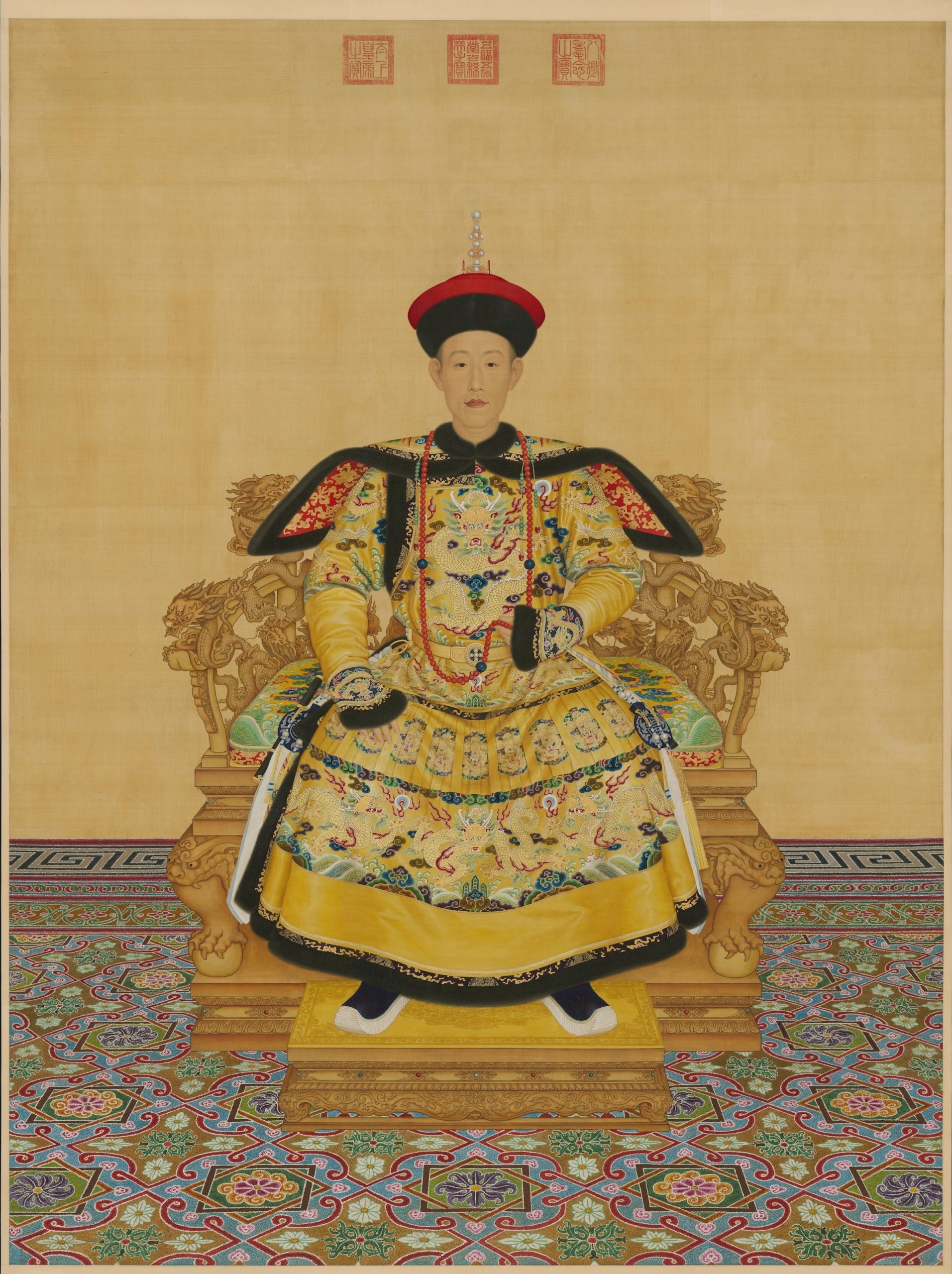Do European textiles have anything to do with Chinese palaces of imperial power? Qianlong, the 18th-century Chinese monarch, would say yes — everything. With an incredible six-decade-long reign during the Qing Dynasty, Qianlong collected several European luxury textiles. Bearing the term xiyang, meaning “Western” in this context, these objects included palace decorations, military and ceremonial regalia, and, notably, tapestries. The Qing court proactively engaged with such Western textiles to assert its political legitimacy in China, an exchange at the center of art historian Mei Mei Rado’s remarkable, if not the most fleet-footed, new book, The Empire’s New Cloth: Cross-Cultural Textiles at the Qing Court.
There are two major strengths of this publication. Rado moves away from an Orientalist viewpoint, which can manifest as a limiting binary in systems of material exchanges. Instead, she pulls back the lens to support a global approach that reveals mutual interest and tributary reciprocity of textiles between 18th-century East Asia and Europe. Even the volume’s title itself is an inversion of Hans Christian Andersen’s 1837 folk tale, “The Emperor’s New Clothes,” subtly correcting the record of the complex socio-political motivations behind the Qing government’s strategic trade in European material culture.
In the book, Rado identifies two types of textiles: “silk and ornamental” and “wool and pictorial.” In China, these styles emerged as repurposed aesthetic objects under the textile-savvy emperor thanks to adept Qing artisanship at workshops in Jiangning (present-day Nanjing), Suzhou, and Hangzhou. Many of the early modern European silks and corresponding Chinese written records explored in the book are held by the Palace Museum in Beijing, known for rarely displaying or loaning pieces in its collection, leading to almost no present-day studies of these textiles.
Objects like the emperor’s dresses, tapestries, and weapon furnishings are the author’s primary investigative sources — the book’s second key quality. Like an art history detective, Rado shows that textiles and their methods of making, such as warp and weft techniques, can reveal robust cross-cultural Chinese-European liaisons driven by nationalism and a keen interest in textile design. “Western silks used in military rituals acquired deep political significance anchored in the Qing imperial ideology,” she explains. The book includes several images of existing imported luxury weaves bearing the French foliage of self-patterns in gold and silver threads, popular English botanical Rococo designs, Russian silk lampas, and even German decorated paper admired and adapted by the Qing court.
Both as patron and connoisseur, Qianlong took an extraordinary interest in the designs of his garments and tapestries through strict instructions — imperial artisans were not permitted to act outside of the emperor’s desideratum. For example, an unnamed French brown silk made in 1710 inspired two textiles at the Qing Imperial Silk Manufactory in Suzhou in the mid-18th century. The two versions reveal Qianlong’s evolving preferences for design and dimensions, as indicated by court documents.

Three French tapestries sent to the Qing court as tributary objects — “Tentures Chinoises” (1688) from the town of Beauvais and “Tentures des Indes” (1765) from Gobelins in Paris — illustrate this artistic and economic exchange particularly well. Evocative of “idealized exoticism” and “monumentality,” these European tapestries reflect how French artisans viewed and represented the Qing court, thriving Chinese lands, and even animals native to South America. Qianlong was especially charmed by what Rado calls “the visual experience offered by these textiles.” They inspired several works of art, such as “Portrait of the Qianlong Emperor” (1736) and the “Qianlong Emperor Hunting Hare” (1755) by Jesuit painter Giuseppe Castiglione, showing the emperor clad in attire inspired by designs in the Tentures.
Notwithstanding compelling scholarship, The Empire’s New Cloth inundates us with facts, making for exhausting reading. The book’s minuscule font and lack of organization do not help, either. But the rewards will likely outweigh the overwhelm for serious readers. This kind of art history methodology should encourage more studies outside established, Orientalist frameworks of inquiry, inviting us to unravel the entanglements between early modern visual culture and global political histories.
The Empire’s New Cloth: Cross-Cultural Textiles at the Qing Court (2025) by Mei Mei Rado is published by Yale University Press and is available online and through independent booksellers.

